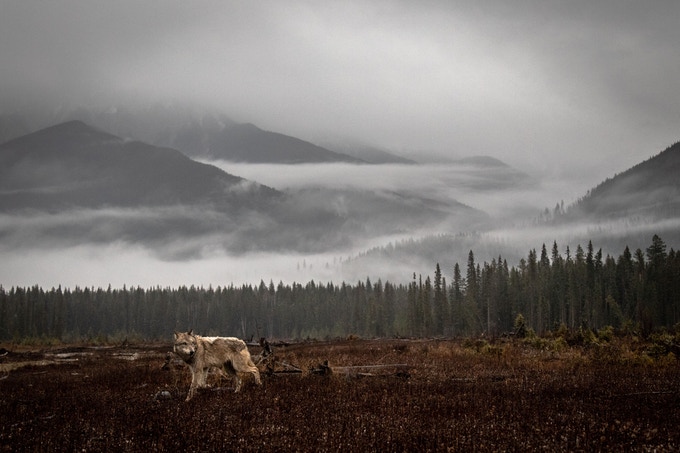Poisoned Earth a new Documentary by Andrew Budziak
In early 2018, documentary filmmaker and Akin King member Andrew Budziak received a tip that something bad was happening to wolves in Alberta so he went to investigate. What he found was horrifying. He discovered that the Alberta government has been using a highly lethal poison to kill wolves. The reasoning for doing this? It is said that they want to help caribou numbers which are in decline. All of the conservation experts Budziak’s team spoke to told them something similar. Budziak notes that wolves are not the biggest danger to caribou - habitat destruction from oil and logging is the real threat. He says that “in order to keep oil and gas happy, the Alberta government has decided to quietly kill wolves instead.”
This discovery sparked an idea to delve deeper into the issue through a new documentary, Poisoned Earth, a film that takes a serious look at Alberta’s wolf cull practices.
Grey wolves like this are the target of the poison program.
“We really needed people to see what was going on here, what was happening with this program.”
Through his Kickstarter campaign, Budziak more than doubled the amount needed to finish the film. It’s because of everyone’s generous support that Budziak and team now have the ability to do a number of things to strengthen this story. Learn more about the film and the kickstarter campaign here.
In early December 2018, Budziak was interviewed by CBC’s Wallis Snowdon and Madeleine Cummings about his new film. They discussed this issue in more detail, exploring the use of strychnine in Alberta, a nasty poison used in the wolf culling, and its drastic effects on the surrounding wildlife and ecosystem overall.
Read the full article here.
Andrew is a documentary film maker based in Toronto. He has produced stories on polar bears, wolves, moose, peregrine falcons and the people who fight to keep those animals safe. Andrew is a former CBC television and radio producer and reporter. His storytelling has taken him around the world from Pakistan to Japan and from Hinton, Alberta to Etobicoke, Ontario. Andrew lives in Toronto with his wife and their one and a half year old son who proudly makes over ten different animal noises.












